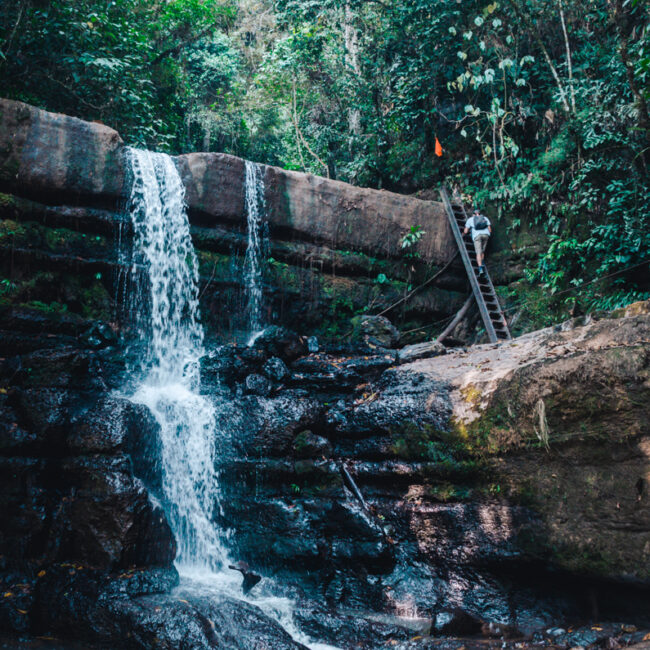

Sustainable travel should be a fundamental component of travel. Curiosity leads wanderlust travelers to search for all kinds of new experiences, in all parts of the world. To see other people, other cultures, and other political systems, and to understand the world we live in, are large motivational factors for international travels. On a global scale, tourism is worth trillions of dollars, and recent studies have shown that it is (in part) responsible for the loss of culture in the social community and environmental damage in regions. Many people speak of ‘green travel’, or ‘sustainable travel’, but what is the practical application for international travelers? What should we do to reduce our footprint and keep damages to a minimum?
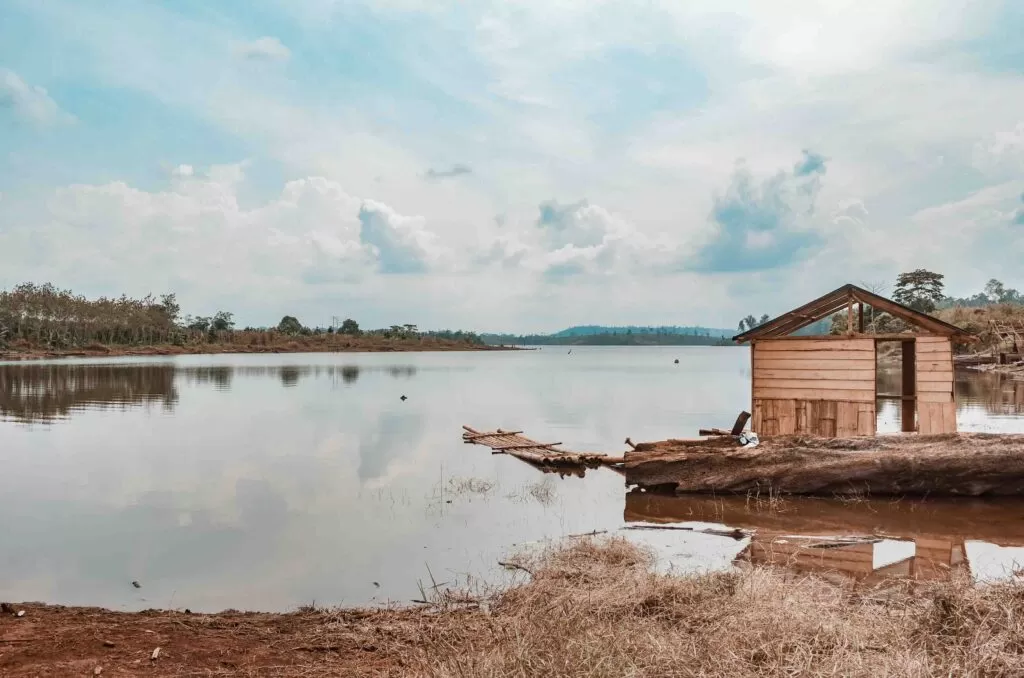
Community-based tourism in the Cardamom Mountains in Cambodia
To me, ‘conscious travel’, or ‘sustainable travel’, is about making smart and informed decisions through thorough research to minimize the negative impacts of travel on the environment, economy, and culture.
That means, as a traveler, you must make a conscious effort to be respectful of the country’s local, culture, customs, way of life, and environment so that future generations can continue to enjoy the same exciting travel experience you’ve enjoyed.
While I love to travel as a way to connect with new people and new cultures, and just let that knowledge enrich my life, I am also aware that it can have a detrimental impact on the world and the locations I visit. I will tell you why I feel this way using Cambodia as an example.
For international travelers, Cambodia has two unique selling points; our ancient history, and our recent history. Understandably, these attractions are two completely different types of experiences. For those interested in ancient history, they traverse the temples of the old Angkor Empire found north of Siem Reap, and smaller temples spread throughout different parts of the country.
For others, Cambodia’s recent history has become a subject of their attraction. The genocide caused by the Khmer Rouge has left a number of devastating evidence in Cambodia’s landscape, and its social and economic environment.
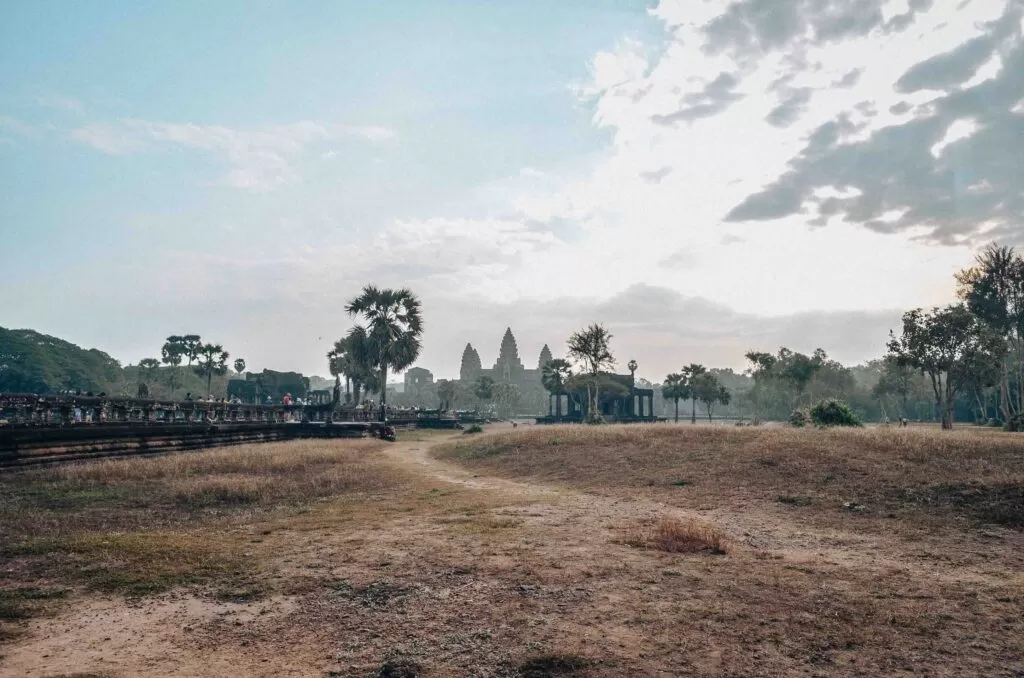
The ancient temples of Angkor Wat, Cambodia.
Cambodia has undoubtedly come a very long way from our shadowed past. The smiling faces that welcome tourists demonstrate our resilience and optimism –we are grateful for a future. But the scars remain.
Every year, undiscovered landmines injure or kill around 200 people. The knowledge gap, caused by the genocide of our most educated elites makes the rebuilding process an overwhelming task. As the school system was almost completely destroyed by the Khmer Rouge in the 70’s, a generation has grown up without basic knowledge and the population’s lack of highly educated people is a major issue.
These are issues that Cambodians live with every day. And, as a tourist to Cambodia, you are intricately a part of this complex ‘equation‘, and your actions, big or small, can have a large, everlasting effect on Cambodia’s fragile growth.
Therefore, putting yourself into this complex equation, your actions, and your behaviors can never be neutral. Introducing foreign ideologies and ways of life into a society that has been relatively isolated can, and will lead to changes in attitudes, values, and behaviors —merely through observing tourists.
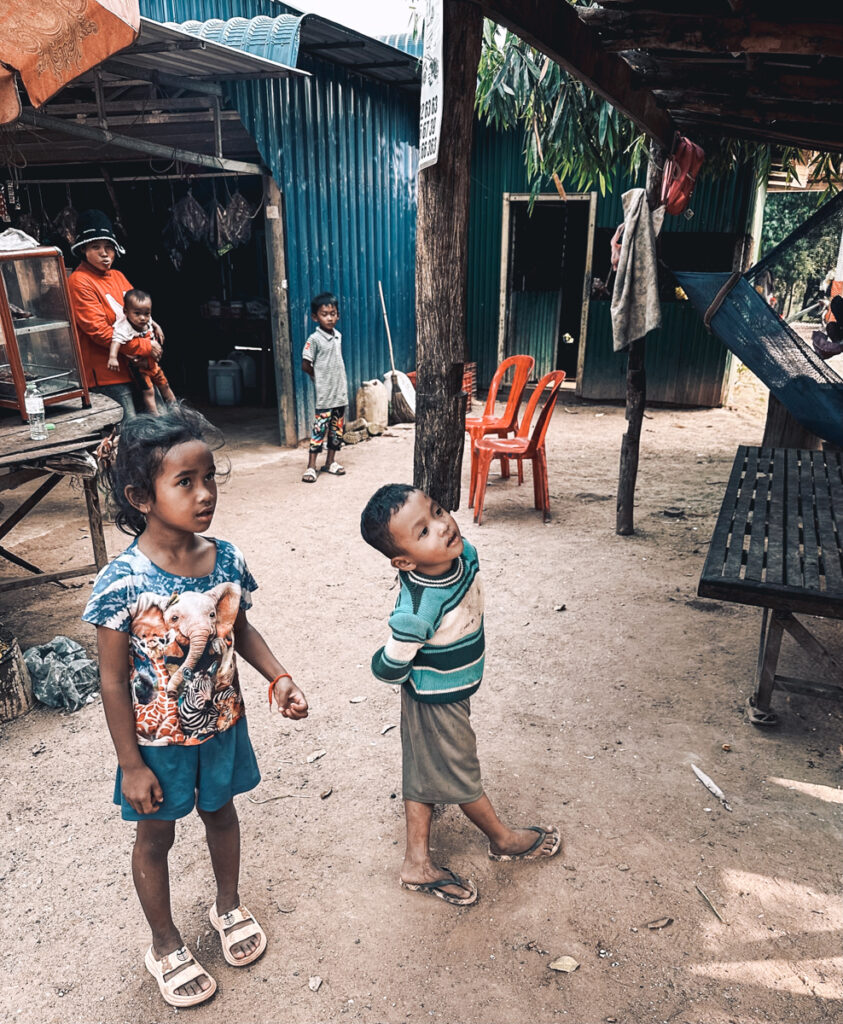
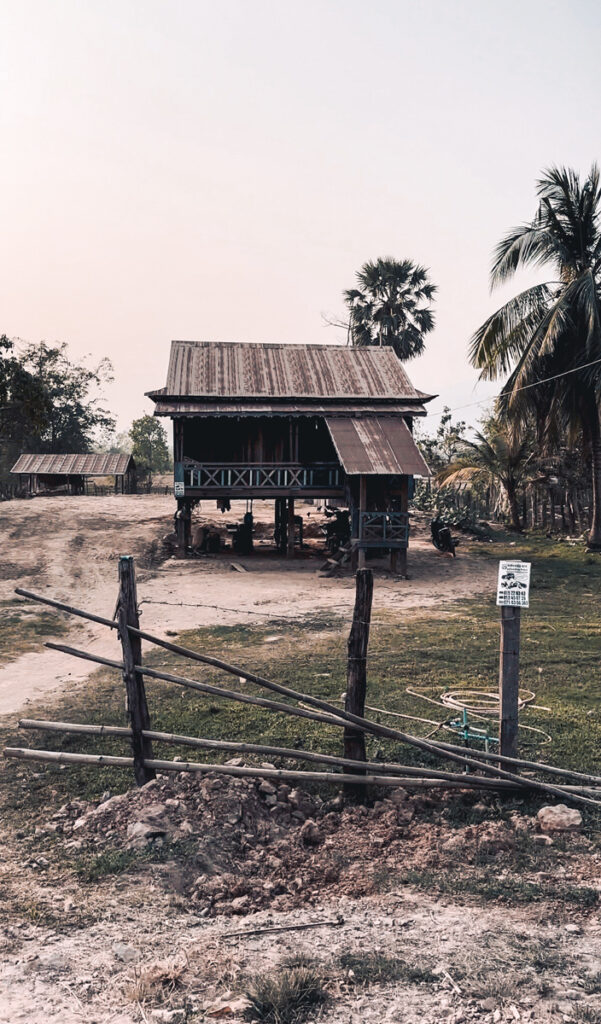
Children and locals at Chambok ecotourism village in Cambodia.
In recent years, a new selling point has emerged for Cambodian tourism: Sihanoukville. The quiet coastal town has turned itself into a tourist destination. It offers something different compared to the unique heritage selling points I’ve mentioned above: A party lifestyle.
The first time I went to Sihanoukville, or what we usually call Kompong Som, there were roughly 10 guesthouses on the beach, and electricity ran only after 7 p.m. My family and I spent most of our days eating seafood, and lazily passing drinks and conversations, once in a while interacting and playing with the locals.
It was the party I was looking for. The pleasure I was pursuing and dreaming about while studying. My parents smiled happily while conversing with the family they hadn’t seen for 10 years, travelers and backpackers spending their evenings spinning poi and swapping travel stories by candlelight. We drank –a lot, and I remember dancing to the wee hours of the morning, unbothered.
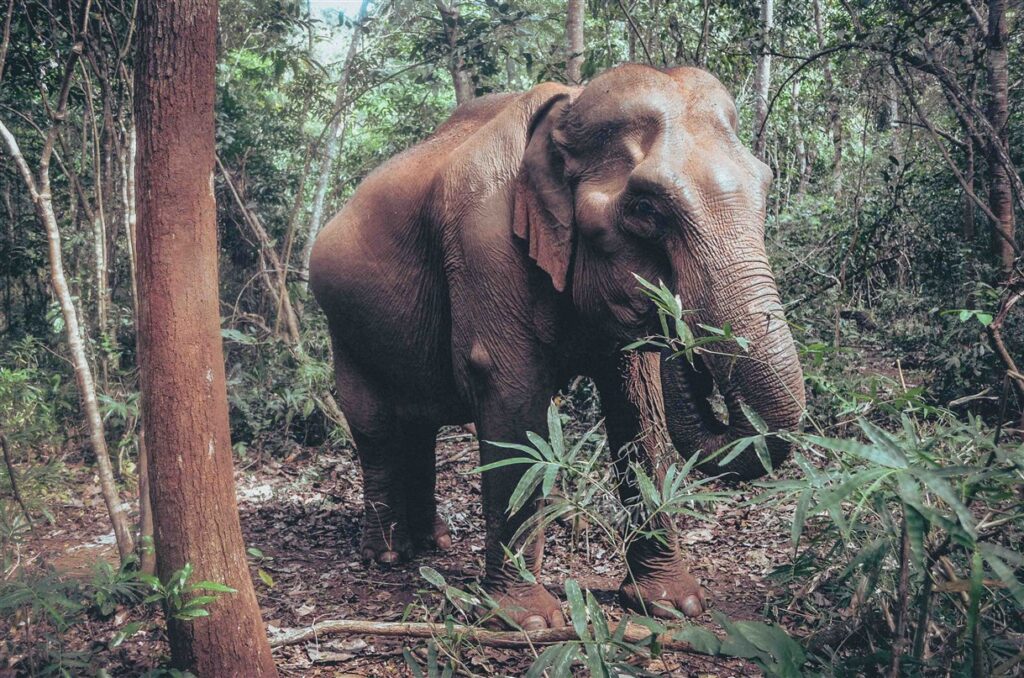
Ethical elephant tourism in Sen Monorom, Cambodia.
When I went again, recently, I noticed many changes. Before, I would roughly see 10 to 20 tourists strolling around, now I see tourists everywhere I look. While the majority of people passing through were still conscientious, there were a lot more bikini-clad women (considered highly scandalous to the still very conservative Cambodian locals) and stumbling half-naked men than before.
Now, there were Full Moon Parties, and with them, came bucket drinkers, and obnoxious “throw your hands up in the air” anthems. A couple of gentlemen came into a bar asking for MDMA (like it’s the most normal thing in the world), and a fight broke out nearby nearly causing a fire to one of the local businesses. Although some came to pursue pleasure, it didn’t take me long to realize that the majority came to Sihanoukville to get F*ked Up.
This was not the Sihanoukville of my memory, not the Sihanoukville I wanted to enjoy with my family. This time, we didn’t stay long and left the next day. You must have heard it a lot, and you may have rolled your eyes at those people who complain. I have recently become one of those folks who says “Things have changed, it’s not like it used to be.”
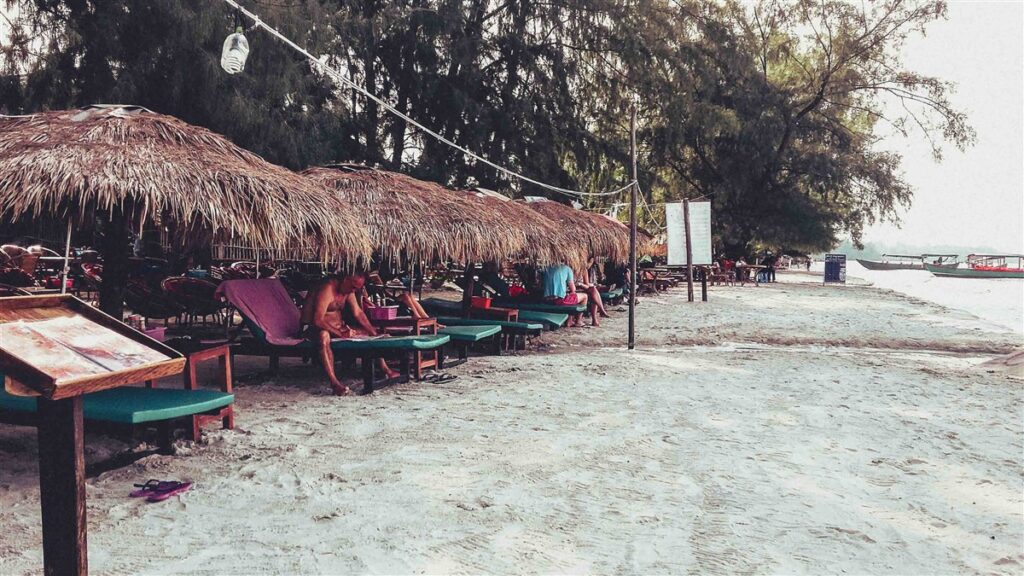
The beach of Sihanoukville, Cambodia.
Don’t get me wrong, Sihanoukville is still a paradise. You can still have long meaningful walks on long stretches of beach. You can still play and form real connections with the locals (you might even be invited to eat authentic home-cooked Cambodian food), eat some of the best seafood, and meet some of the most interesting and honest travelers —if you venture from the western side of the pier away from the fist-pumping, drug-infused party.
I will not say, ‘Please boycott Sihanoukville so that it can go back to what it once was’, but I will say this: “Sihanoukville is magical, but it is changing”. And hopefully, the magic doesn’t burn out before the next generation can enjoy it.
So, when traveling, make sure your holiday has a positive impact on the local community, environment, and culture. Please travel responsibility, so that the next generation could have the same ‘magical‘ experience you’ve had. Below are some practical tips on sustainable travel in Cambodia.
Over a third of Cambodians involved in sex tourism are under the age of 18. However, tourism and tourists themselves can reduce this number and create a huge impact by encouraging vigilance within Cambodia, to stamp out sexual exploitation of children.
Create an impact by using hotels certified by ChildSafe. Tourists will not be permitted to bring local children into the hotel, and anyone observed with a local youngster will be reported.
The massive Angkor Wat floats on sandy earth, held in place by groundwater, but this water is now being pumped rapidly out of the ground to support the millions of visitors who arrive each year. The ancient Angkor Wat temples may soon crack, crumble, or sink into the sand in the near future if illegal pumps and wells that drain the water far beyond their capacity don’t decline.
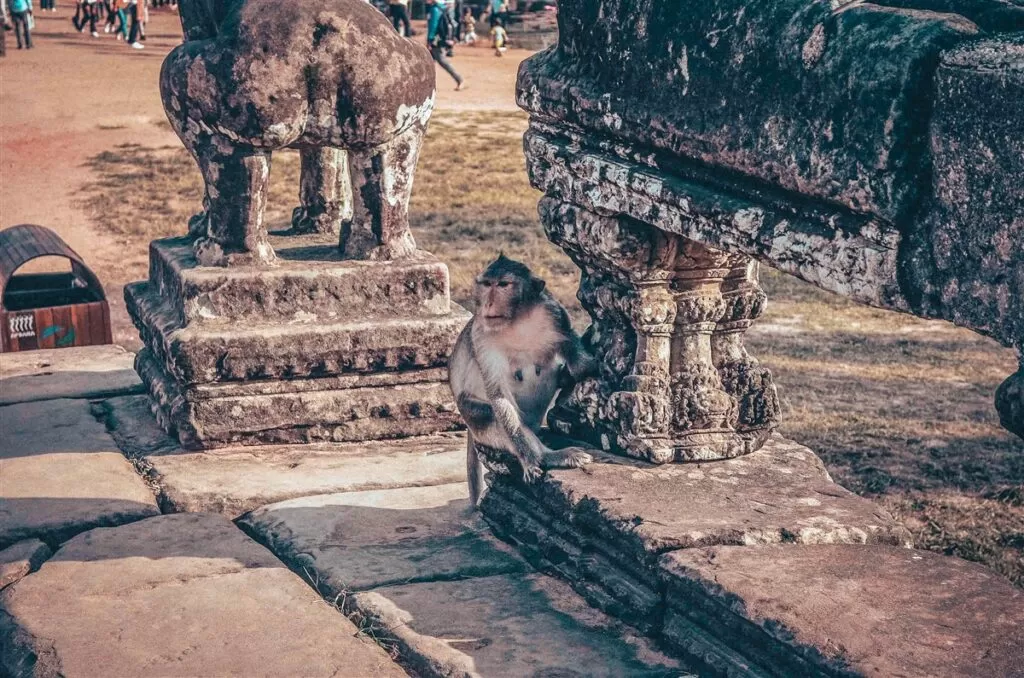
Monkey at Angkor Wat, Cambodia.
Sustainable Travel Tip: Siem Reap’s water insecurity is a direct result of tourism. As a tourist, you can make an impact by choosing only to stay in hotels with an active water policy, and sustainable practices. If you’re not sure, give the guesthouse a call to inquire. Let them know that you want to support the local economy, environment, and culture, and ask whether those are things they incorporate into their philosophy.
It’s usually evident whether a company is trying to look good with marketing tactics, or whether they share a commitment to sustainability —look around for signs about their water and energy policy. Don’t book your stay if they have swimming pools. Make use of Cambodia’s beautiful natural resources by visiting its beaches instead. Reuse your towels and sheets, and take short showers.
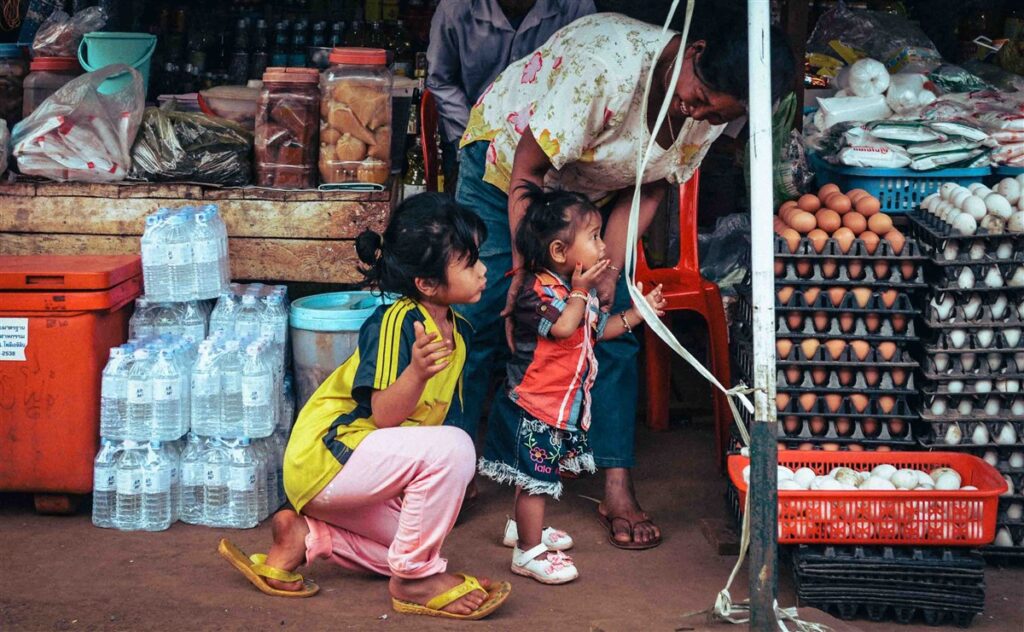
Never give money to begging children, or buy trinkets or booklets sold by children. These children may be working for organized gangs and are being forced to beg. Families may also be urged to pull their children out of school so that they can earn by begging on the streets.
If you want to make an impact and help these children, look instead into local organizations who are working with street children, and donate to those.
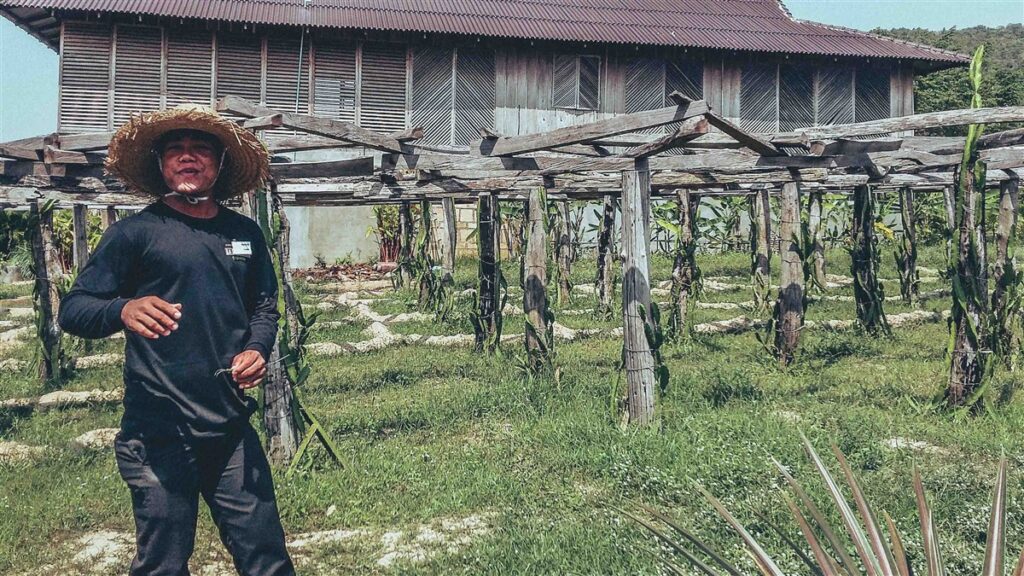
A tour at a local pepper farm in Kampot, Cambodia
Ensure your spending is going towards the local community. Opt for local products and produce that support the local people. In Cambodia, this is especially important. There has been an influx of large, foreign investors drawing up plans to construct huge resorts, casinos, and golf courses in major tourist locations such as Phnom Penh, Siem Reap, and Sihanoukville.
Due to government corruption, lands are not sold to the most ethical investors. Not only do these new facilities create unsustainable pressure upon natural resources such as water but many local communities also have been illegally evicted from their land without adequate notices, and compensation.
So, don’t travel across the globe just to swim in a pool, or play a round of golf, because, at the end of the day, none of the money spent there will contribute to the local community or environment. If you travel to Cambodia, support local guesthouses and restaurants.
Be careful of fake orphanages in Cambodia targeting tourists for cash. With the increase in mass tourism, the number of orphanages in Cambodia has grown by 65% since 2005.
Some of these organizations parade children through tourist eateries in search of donations and volunteers. Kids should be in school, either studying, playing, or sleeping, so any orphanage that turns kids into walking advertisements doesn’t prioritize the well-being of children.
Organizations like ConCERT can help you identify legitimate organizations in need of your donations, volunteer time, and business.
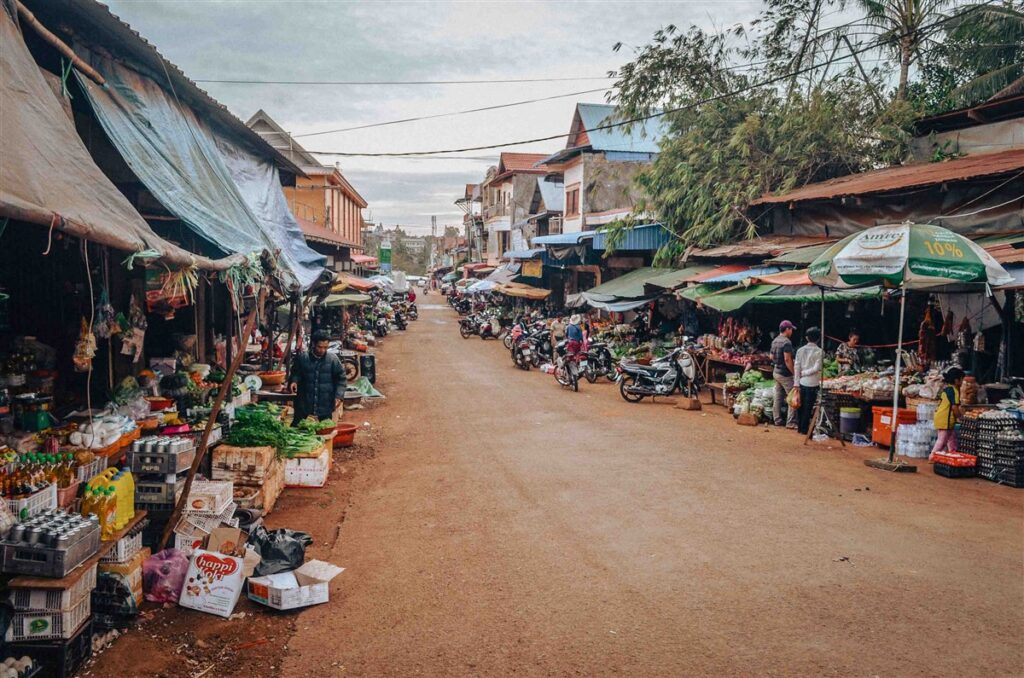
Local village in Cambodia
Cambodia is still a deeply religious and conservative society, especially in the remote countryside area. Therefore, tank tops, short shorts, or short skirts should not be worn.
Dress modestly in temples –knees and upper arms should remain covered, and you should remove your shoes before entering a temple. If you decide to wear shorts, it’s a good idea to carry a sarong or light scarf around to cover up at short notice.
Even If you’re bathing in waterfalls and lakes in isolated areas, wear a T-shirt over your bikini. Khmer women still wear traditional, full-length sarongs when swimming.
In bars and nightclubs, it may be different, but in the countryside, Cambodians are still very conservative. The best thing to do is look around – if you’re under-dressed, you’ll know it.
In Cambodia, the head is the “highest” and most revered part of the body, so never touch anyone’s head. Conversely, the feet are the lowest, so do not point your feet at someone’s head, or religious monuments and statues, it is very offensive.
Never touch a monk. When making an offering, or giving alms, do not let your spoon touch the sides of the baat (monk bowl).
Conserve Cambodia’s rich archaeological history; never handle sculptures or bas-reliefs, and never buy historical artifacts.
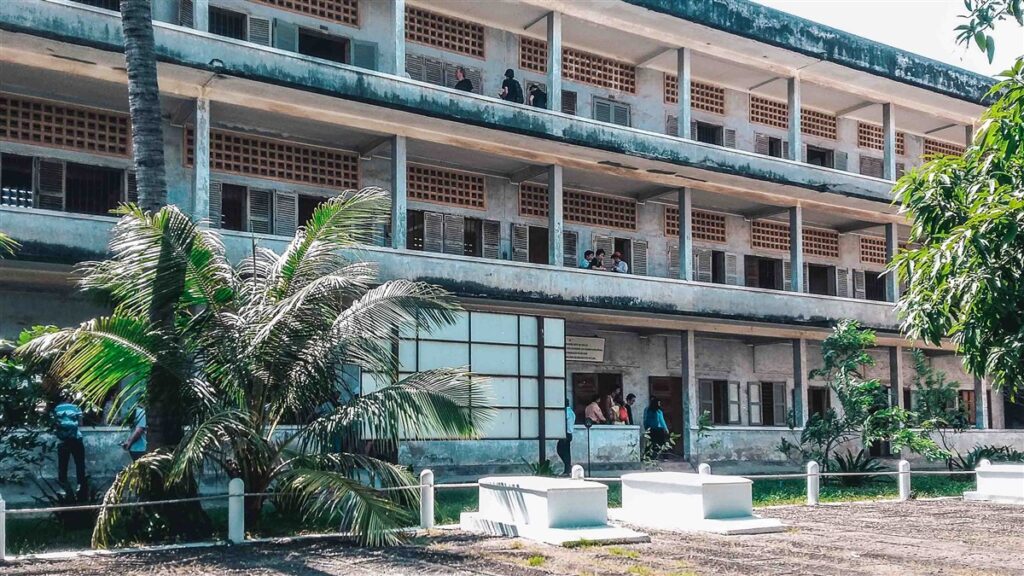
Tuol Sleng Prison, Phnom Penh, Cambodia
Never take photographs without permission. Although this could be said for many situations, it is especially important here. Spend time with the Khmer locals, and make a conscious effort to understand their way of life.
Respect their culture and religious beliefs, even if they are different from your own. When people warm up, their smiles are brilliant, and your pictures naturally become that much more amazing.
Cambodia is having to rapidly adapt to the amounts of waste generated by population growth, modernization, and the continuously growing tourism industry. Today, garbage bins are still limited.
Keep garbage until you can find a proper place to dispose of it. Use reusable grocery bags, and avoid collecting plastic bags.
There is also no safe way to dispose of batteries in Cambodia, so take them back home with you.
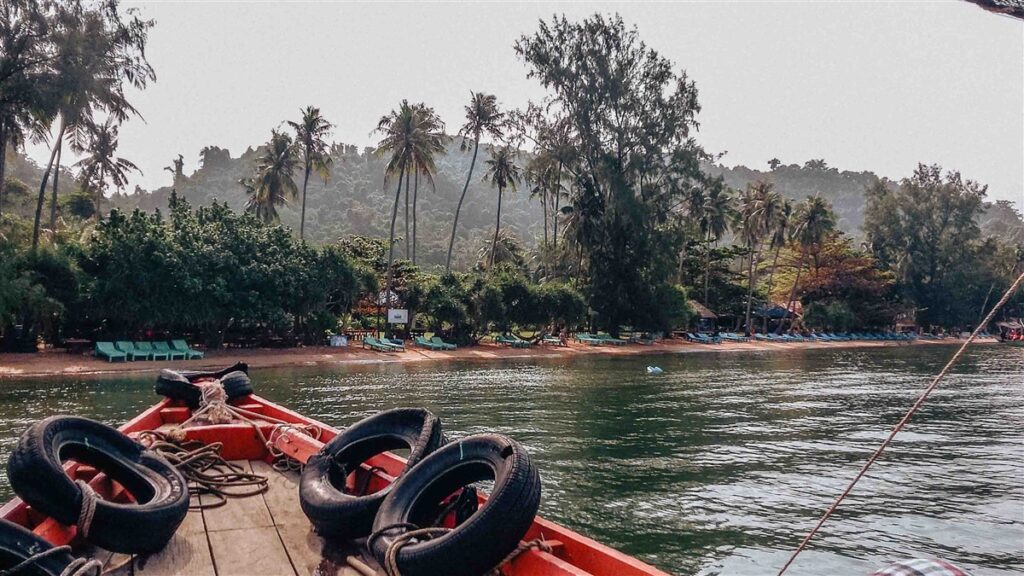
A local boat ride to Koh Tonsai (Rabbit Island), Cambodia.
Remember to tip! Keep U.S. dollar bills in small denominations to support staff, guides, and drivers.
Many people come to Siem Reap and Phnom Penh to make a living for their family in the countryside, and usually only make $20-$30 dollars per month.
Do you practice sustainable travel during your travel adventures? If so, what are some of those practices?
Let me know in the comments below or drop me a message through my contact page.
Also, don’t forget to check out my resources page with my favorite booking platforms and tips to start planning your trip. Additionally, have a look at my favorite travel gear if you want to pack more consciously!
ENJOY!
Disclaimer: This post may include affiliate links. If you click on them, I may receive a commission at no extra cost to you.
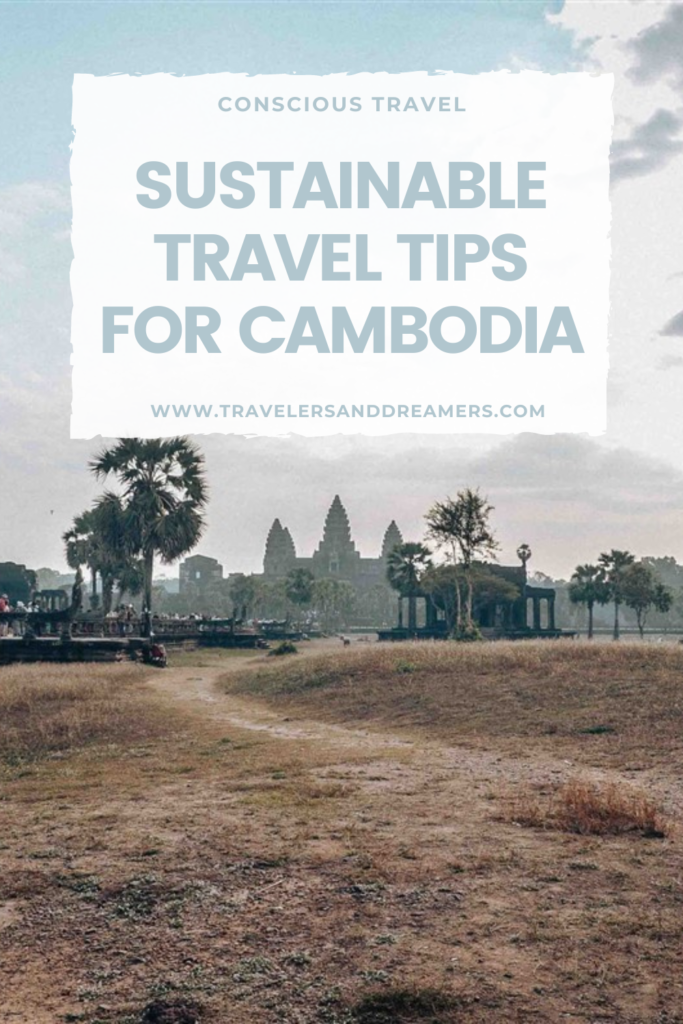
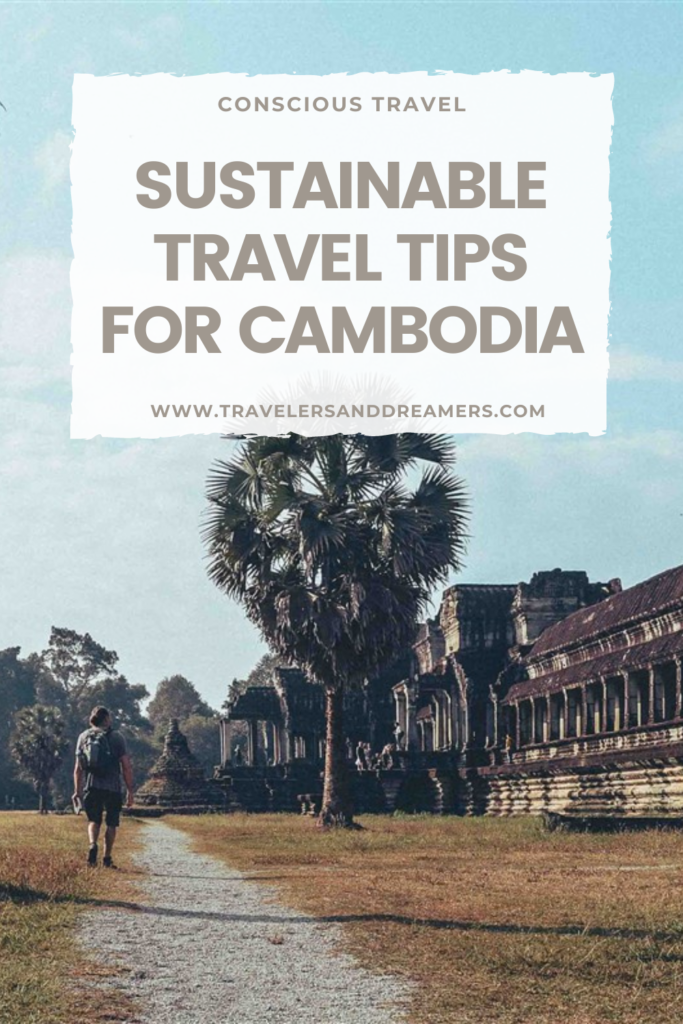

Hi! I am Annelies and this is Travelers & Dreamers, a blog about conscious travel which means traveling in a more mindful way, with a positive impact on the world and yourself!
On this website, I cover different topics like slow travel, plant-based food guides, responsible travel, sustainable packing, eco-travel, and more!
Latest Posts


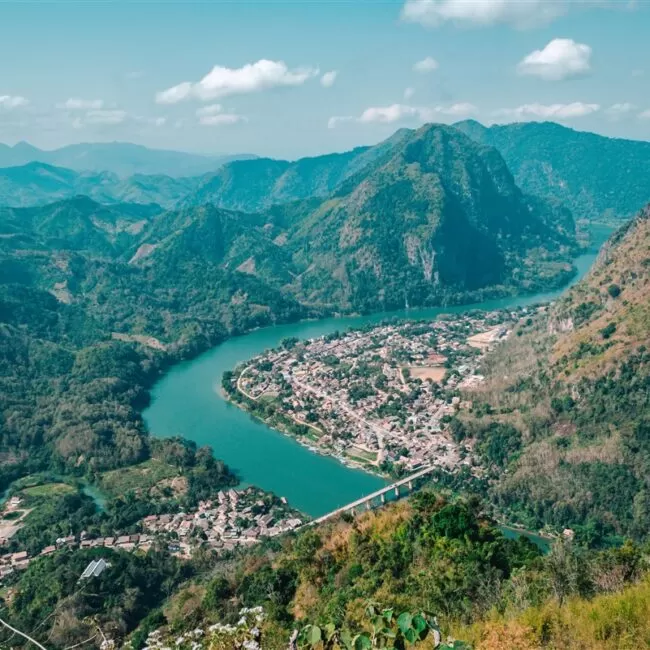
15 Best Things to Do in Nong Khiaw, Laos (2024)
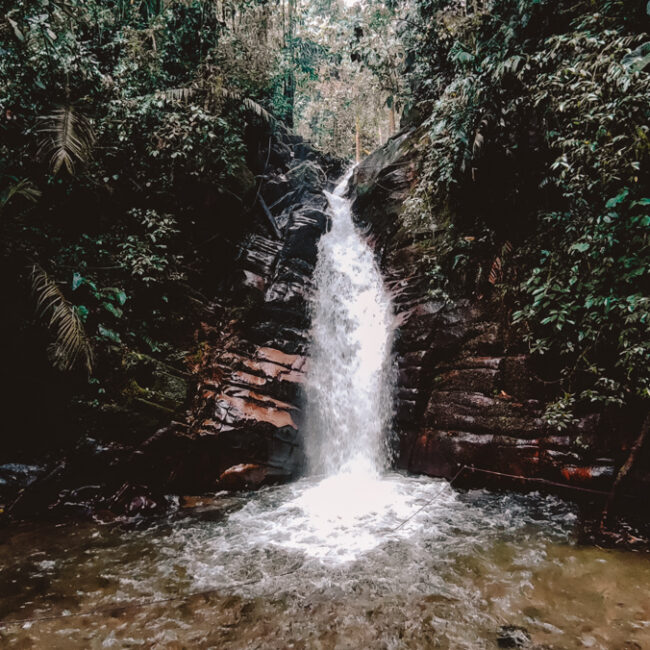
Santa Rita, Salento: All You Need to Know
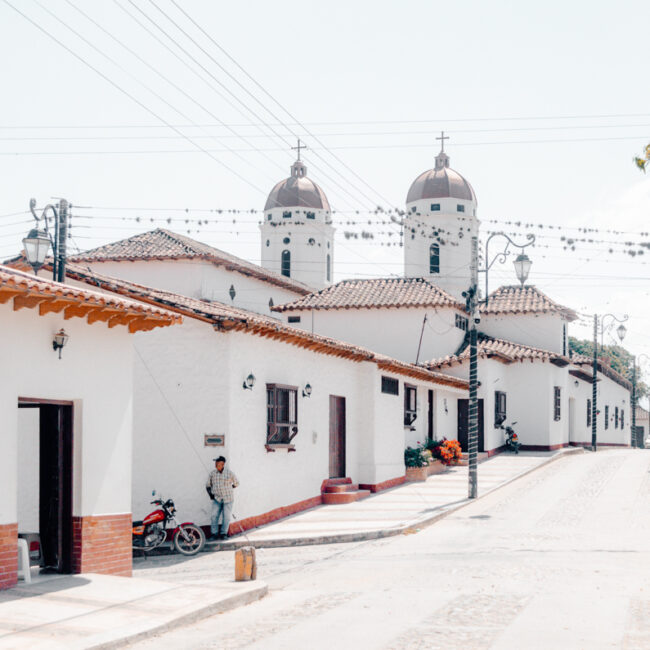
La Playa de Belen, Colombia: An Easy Travel guide!
Do you want to receive my latest finds on conscious and sustainable travel directly to your inbox? Subscribe here!
© COPYRIGHT TRAVELERS&DREAMERS, 2023.